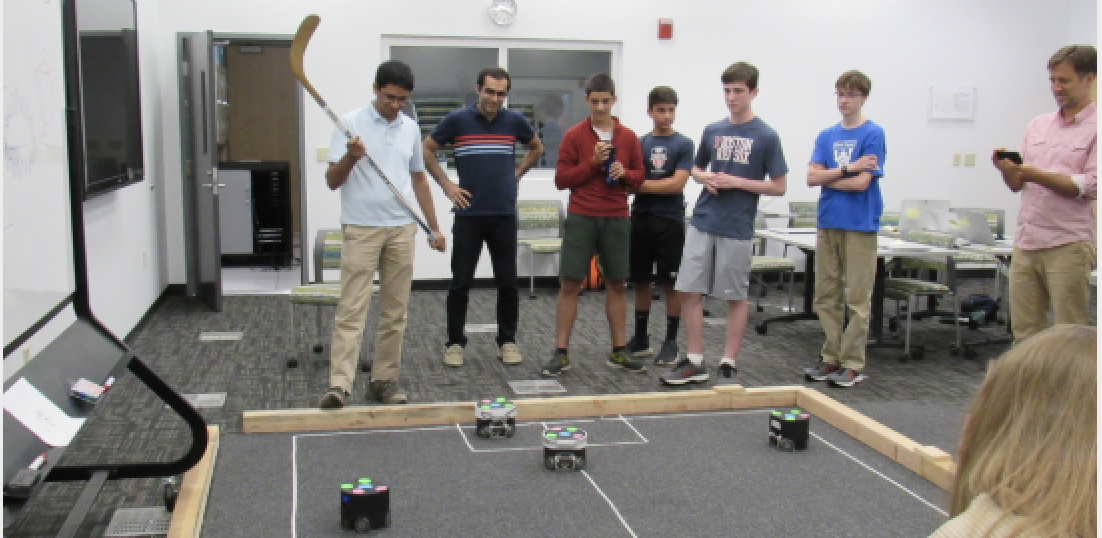
Students at a HolyokeCodes Soccer Robotics program learn to play soccer with robots using JavaScript.
RoboCup is an international scientific initiative with the goal of advancing the state of the art of intelligent robots. When established in 1997, the original mission was to field a team of robots capable of winning against the human soccer World Cup champions by 2050.
Of the multiple Robocup Soccer leagues that exist, the "Small Size" league is one of the oldest. Arjun Guha and Joydeep Biswas, assistant professors in the College of Information and Computer Sciences at UMass Amherst, and their students adapted the UMass Minute Bots Robocup Team robots (which they use to compete in Small Size league competition), to a JavaScript interface designed for high school students. Centrally controlled via radio, using perception based on a central overhead camera, the robots can travel up to 5 m/s and kick, chip-kick, and dribble a golf ball.
Over the course of a week in early July, local area students in grades 9 through 12 learned basic commands to control the robots, developed simple planning algorithms, and programmed behaviors for offensive and defensive roles with the week culminating in a series of 2 v 2 matches. Students came away from the activity with a new appreciation for the problems of intelligent multi-robot/agent cooperation and control in the highly dynamic environment of even a toy soccer pitch plus plenty of hands-on coding and robotics experience.